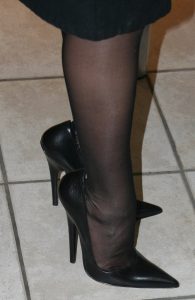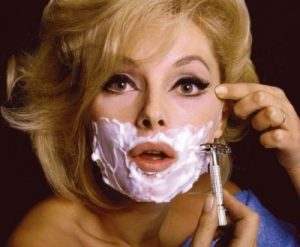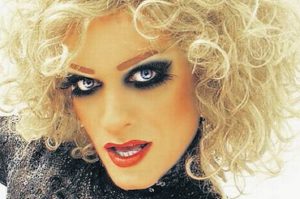Dina’s Diner 7/6/15
GROWING PAINS FOR THE TRANSGENDER MOVEMENT?
Last month I mentioned I was a little worn out from Caitlyn Jenner overload. But it still continues and perhaps will for a while to come since she is now a bona fide celebrity (post-Bruce) and almost everything she does will be reported on.
The New York Times Sunday Review section had an opinion piece titled “What Makes a Woman?” in the June 7, 2015 edition. Write Elinor Burkett begins the piece this way: “Do women and men have different brains? When Lawrence H. Summers was president of Harvard and suggested that they did, the reaction was swift and merciless. Pundits branded him sexist. Faculty members deemed him a troglodyte. Alumni withheld donations. But when Bruce Jenner said much the same thing in an April interview with Diane Sawyer, he was lionized for his bravery, even for his progressivism. “My brain is much more female than it is male” he told her, explaining how he knew he was transgender.”
Ms. Burkett then mentions that Caitlyn’s big coming out Vanity Fair photo spread and article “offered us a glimpse into Caitlyn Jenner’s idea of a woman: a cleavage boosting corset, sultry poses, thick mascara, and the prospect of regular “girls nights” banter about hair and makeup.”
Now that the dust has settled a little, one can see how a feminist might be somewhat appalled by the superficiality of the Jenner femininity. Apparently some other feminists are offended by the “born in the wrong body” and “always feeling feminine” storylines often mentioned in transgender coming out narratives.
Oddly, Ms. Burkett wonders how a white person who “transformed” him-(or her)- self into an African-American by changing skin color and hair texture would be received by true genetic African-Americans (or other observers). The article apparently predated the Rachel Dolezal circus which was widely viewed as a bizarre episode rather than an affirmation of some deeply held feeling of “blackness.” Hmmmm. Accept transgenderism; don’t accept trans-racialism?
Meanwhile in a later Times article on June 21, 2015 in the Arts section, a small collection of real transgender performers are interviewed as acting roles begin to open up for them. One actor said that despite the progress, the roles are still restricted to certain types or situations. “God forbid you put us in charge of children or in the corporate world where we have power.”
So things are happening for the positive — and quickly it seems. And we should be ready for reasoned objections from some quarters if hypocrisy or double standards are uncovered. Forget the screaming deniers. Their unreasoned objections have mostly been rejected by popular acceptance. But if someone doesn’t like Caitlyn’s corset any more than she likes a stripper’s boob job, we gotta deal with that. And in the end, one person’s femininity is another person’s superficiality. Everyone’s gotta learn and grow.
MORE SHOE BUSINESS THAN SHOW BUSINESS
There were two articles about high heels in The New York Times appearing about a month apart. On may 24, 2015 the Sunday Review opinion section had a piece headlined “Shoes That Put Women in Their Place.” On June 23, 2015, the Times Science section had an article headlined “Heels in a Non-Jurassic World.”
In the earlier item from May, the writer recounted the barring of some women who had the audacity to wear flat-soled shoes to the Cannes Film Festival. The opinion piece said, “You can’t even really see the shoes. In many of the photos of women on the red carpet at the Cannes Film Festival, the elegant gowns fall all the way to the ground, obscuring a view of their special occasion footwear.” The remainder of the piece told the history of how high heels became a “woman thing” even though created for men centuries ago.
 The science-based Times article also started with a show-biz anecdote. In the new Jurassic World film, a heroine runs full break from rampaging dinosaurs in high heels “without turning a hair or an ankle.” The rest of the article is an oft-reported science-based reason why high heels are unnatural things to wear on human feet.
The science-based Times article also started with a show-biz anecdote. In the new Jurassic World film, a heroine runs full break from rampaging dinosaurs in high heels “without turning a hair or an ankle.” The rest of the article is an oft-reported science-based reason why high heels are unnatural things to wear on human feet.
While the opinion piece takes for granted that high heels are symbols of sex appeal and even female power (dependent on the context), the science piece deconstructs the biophysics of the foot and ankle muscles in high heels and finds them sub-optimal for most things — including escaping dinosaurs run amok. In South Korea’s Hanseo University, researchers are using a program of flight attendant trainees to measure the effect of high heels on foot and ankle strength compared to a control group of “normal” female students. The flight attendant trainees are required to wear heels as part of their schooling so their feet are exposed to many more hours of high heel effects than the control group.
The researchers found that the trainees’ feet and ankle strength improved over time as they became accustomed to the heel height. But that in the third and fourth year, other issues such as balance and eventually the strength that had been built up over time began to diminish and turn negative. Not surprisingly, doctors recommend minimizing high heel wearing where possible. Even while seated and not exerting pressure on the foot, the angle of the shoe and its effect on foot muscles can be harmful over the long-term.
Meanwhile, the high heel has become so much a part of our culture — especially in the entertainment world — that the idea of a woman not wearing them to a major event like Cannes is — literally — inadmissible to our minds or the red carpet. Science be damned, we will not allow foot and ankle health to alter our expectation of “proper” women’s shoes. I guess I’m in no place to judge. I love heels — on strippers, office women, Milf’s, teenagers … even guys dressed as any of the foregoing.
IT’S ALRIGHT TO GET YOUR PANTI IN A BUNCH
The New York Times Arts section had an article about Irish drag queen Panti Bliss (yes, that’s her stage name) in the June 11, 2015 edition. Ms. Panti is appearing in a one woman show at New York’s Irish Arts Center. The reason why the Times gave a half page of space to a review of a drag show perhaps had to do with the stir caused by Panti’s speech in Dublin, Ireland earlier this year.
The Times article mentioned that Panti’s speech about homophobia went viral when posted online. I found it on You Tube — as you can if you simply pop Panti’s name in the search box. Panti was invited onstage after a play in Dublin (about early 20th century Irish working class people, of all things) and delivered a simple monologue about what it’s like to be oppressed by the type of slights or observations by straights that seem considered, polite, and rational by most who have not ever felt the oppression experienced by gay people all the time. It’s worth listening to because it isn’t hateful or even argumentative, nor is it a comedy bit or meant to be satirical. It’s just a real expression that should put things in perspective for most straight people — such as the audience she was speaking to.
But rational expressions only go so far. Panti was sued by some of the talking head pundits she originally called homophobic on the grounds that calling them homophobic was itself “hateful.” As she noted in the monologue, the result was Orwellian. Only the homophobes can now claim homophobia hurts them, she pokes.
In the Times review of her one woman show, High Heels in Low Places, the reviewer seems impressed by Panti’s (Rory O’Neill in real life) “genuine personal modesty” as well as her one woman show’s material, her delivery and physical presence, and her glamorous “wasp-waisted dress.” The review points out that Panti tells the audience not to expect any “inspiring words of wisdom” in the New York show. But one is left feeling that perhaps Panti is a pretty good ambassador to break down the type of ingrained homophobia she addresses in her monologue.
WOULD MADAM CARE FOR A SHAVE TODAY?
 The New York Times Thursday Styles section had an article about female face shaving on June 11, 2015. In the midst of well-documented usage of all manner of cosmetic ointments, procedures, surgeries, etc, the facial shave for women is still rarely practiced and even more rarely admitted.
The New York Times Thursday Styles section had an article about female face shaving on June 11, 2015. In the midst of well-documented usage of all manner of cosmetic ointments, procedures, surgeries, etc, the facial shave for women is still rarely practiced and even more rarely admitted.
The Times reports that some women are regular and long-time face shavers. They do it to get rid of the peach fuzz hair on lips and cheeks, the darker hairs that creep down the sideburn area, and the smaller outcrops of facial hair on chins or elsewhere on their collective mugs.
It should be noted that facial shaving for women is not a daily chore. Jen Ruhman, who was photographed shaving for the Times article, said she started shaving in the 12th grade. She is now a blogger about beauty and elegance and advocates shaving for women. “I tell them I shave once a week, and they look at me like I’m crazy. But I tell them try it: it works.” Ms. Ruhman uses extra virgin olive oil and a men’s safety razor to do the deed.
One woman who came out publicly as a face shaver said, “Initially I did it because of the hair, but then I noticed that it was a great exfoliant and that my makeup went on a lot easier.” A Japanese-American woman (who posted a shaving video to YouTube) said, “I’m big into makeup and skin care, so why not have the smoothest canvas possible.” The Times report said, “At home shaving is a less intense form of dermaplaning, in which the face is shaved with a scalpel-like instrument [by professionals].”
So shaving’s obvious benefit of making hair go away also provides the skin smoothing exfoliation that clears dead skin and leaves a clean layer of skin to cosmetize. One facial aesthetician said that Marilyn Monroe and Elizabeth Taylor shaved their gorgeous pusses, as do some of her current celebrity clients whom she declined to name.
The Times article also included a step by step guide to face shaving for the newbies. The sidebar included helpful products to make the shaving prep, process and aftermath as soothing as possible. I can see a whole new market here for the beauty industry. How long before we see a supermodel or movie star lathering up and shaving with the same long, elegant strokes employed by masculine shaving models of days gone by?
Category: Transgender Fun & Entertainment, Transgender Opinion





